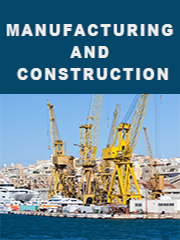Report overview
A hydrocyclone is a filter or separator mechanism that uses centrifugal force to separate solids from liquids or even liquids of different consistencies.
A hydrocyclone will normally have a cylindrical section at the top where liquid is being fed , and a base. The angle, and hence length of the conical section, plays a role in determining operating characteristics.
This report aims to provide a comprehensive presentation of the global market for Hydrocyclone, with both quantitative and qualitative analysis, to help readers develop business/growth strategies, assess the market competitive situation, analyze their position in the current marketplace, and make informed business decisions regarding Hydrocyclone. This report contains market size and forecasts of Hydrocyclone in global, including the following market information:
Global Hydrocyclone Market Revenue, 2018-2023, 2024-2029, ($ millions)
Global Hydrocyclone Market Sales, 2018-2023, 2024-2029, (K Units)
Global top five Hydrocyclone companies in 2022 (%)
The global Hydrocyclone market was valued at US$ 592.7 million in 2022 and is projected to reach US$ 713.2 million by 2029, at a CAGR of 2.7% during the forecast period. The influence of COVID-19 and the Russia-Ukraine War were considered while estimating market sizes.
Global Hydrocyclone key players include FLSmidth, Weir Minerals, KSB, etc. Global top three manufacturers hold a share about 35%.
Europe is the largest market, with a share over 50%, followed by North America and China, both have a share over 35 percent.
In terms of product, Solid-liquid Type is the largest segment, with a share about 45%. And in terms of application, the largest application is Mining, followed by Adiponitrile, Oil & Gas, etc.
We surveyed the Hydrocyclone manufacturers, suppliers, distributors and industry experts on this industry, involving the sales, revenue, demand, price change, product type, recent development and plan, industry trends, drivers, challenges, obstacles, and potential risks.
Total Market by Segment:
Global Hydrocyclone Market, by Type, 2018-2023, 2024-2029 ($ Millions) & (K Units)
Global Hydrocyclone Market Segment Percentages, by Type, 2022 (%)
Solid-liquid Type
Liquid-liquid Type
Dense Media Type
Global Hydrocyclone Market, by Application, 2018-2023, 2024-2029 ($ Millions) & (K Units)
Global Hydrocyclone Market Segment Percentages, by Application, 2022 (%)
Mining
Oil & Gas
Others
Global Hydrocyclone Market, By Region and Country, 2018-2023, 2024-2029 ($ Millions) & (K Units)
Global Hydrocyclone Market Segment Percentages, By Region and Country, 2022 (%)
North America
US
Canada
Mexico
Europe
Germany
France
U.K.
Italy
Russia
Nordic Countries
Benelux
Rest of Europe
Asia
China
Japan
South Korea
Southeast Asia
India
Rest of Asia
South America
Brazil
Argentina
Rest of South America
Middle East & Africa
Turkey
Israel
Saudi Arabia
UAE
Rest of Middle East & Africa
Competitor Analysis
The report also provides analysis of leading market participants including:
Key companies Hydrocyclone revenues in global market, 2018-2023 (Estimated), ($ millions)
Key companies Hydrocyclone revenues share in global market, 2022 (%)
Key companies Hydrocyclone sales in global market, 2018-2023 (Estimated), (K Units)
Key companies Hydrocyclone sales share in global market, 2022 (%)
Further, the report presents profiles of competitors in the market, key players include:
FLSmidth
Weir Minerals
KSB
Siemens
Metso
TechnipFMC
Exterran
Weihai Haiwang
Netafim
Schlumberger
Outline of Major Chapters:
Chapter 1: Introduces the definition of Hydrocyclone, market overview.
Chapter 2: Global Hydrocyclone market size in revenue and volume.
Chapter 3: Detailed analysis of Hydrocyclone manufacturers competitive landscape, price, sales and revenue market share, latest development plan, merger, and acquisition information, etc.
Chapter 4: Provides the analysis of various market segments by type, covering the market size and development potential of each market segment, to help readers find the blue ocean market in different market segments.
Chapter 5: Provides the analysis of various market segments by application, covering the market size and development potential of each market segment, to help readers find the blue ocean market in different downstream markets.
Chapter 6: Sales of Hydrocyclone in regional level and country level. It provides a quantitative analysis of the market size and development potential of each region and its main countries and introduces the market development, future development prospects, market space of each country in the world.
Chapter 7: Provides profiles of key players, introducing the basic situation of the main companies in the market in detail, including product sales, revenue, price, gross margin, product introduction, recent development, etc.
Chapter 8: Global Hydrocyclone capacity by region & country.
Chapter 9: Introduces the market dynamics, latest developments of the market, the driving factors and restrictive factors of the market, the challenges and risks faced by manufacturers in the industry, and the analysis of relevant policies in the industry.
Chapter 10: Analysis of industrial chain, including the upstream and downstream of the industry.
Chapter 11: The main points and conclusions of the report.
